Plantar fasciitis can be a challenging companion on your hiking journey. As a hiker, it’s essential to recognize the symptoms that might impact your trails and treks.
Some symptoms indicate your feet might struggle with this condition, potentially affecting your hiking experience.
One such symptom is the sharp, stabbing pain that often targets your heel, making those first steps in the morning feel particularly daunting.
Also, you might notice discomfort in the arch of your foot, which can sometimes mimic general foot fatigue but can vary in intensity throughout the day.
Stiffness might greet you after periods of rest, gradually fading as you get moving. Look for any swelling around your heel, a common sign of inflammation.
You should also be aware of other symptoms. We’ll talk about the symptoms of plantar fasciitis, treatment options, and how you can keep hiking with it.
What Are the Symptoms of Plantar Fasciitis: 5 Indications
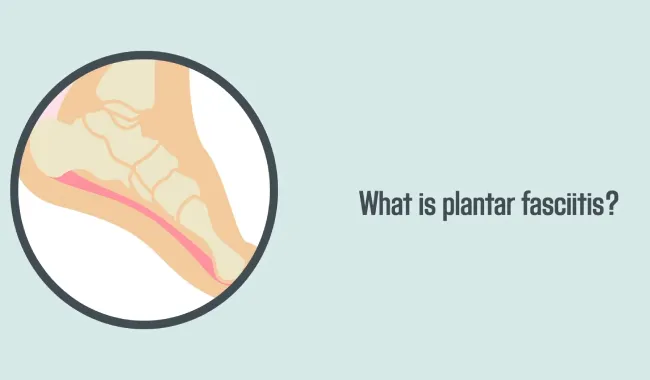
When you’re dealing with plantar fasciitis, it’s important to recognize the symptoms that can impact your hiking experience. You should be aware of the following discomforts that come with this condition:
- Heel pain
- Arch discomfort
- Stiffness
- Swelling
- Achilles tendon tightness
Let’s examine the condition of plantar fasciitis in more detail.
1. Heel Pain
When you have plantar fasciitis, you may experience a sharp, stabbing pain in your heel, especially when you take your first steps in the morning.
Plantar fasciitis causes this pain by inflaming a thick band of tissue in your heel bone that connects your toes to your heel.
The pain is typically localized to the bottom of your heel and can feel like stepping on a sharp object or a bruise. It may also worsen after prolonged periods of rest or activity.
2. Arch Discomfort
You may also feel pain in your arch, which can be mistaken for general foot fatigue.
This discomfort in the arch is a common symptom of plantar fasciitis. Plantar fasciitis is a condition that occurs when the fascia, which runs along the bottom of your foot, becomes inflamed.
The arch pain is typically worse in the morning or after long periods of rest, as the tissue tightens up during periods of inactivity. It may also be aggravated by activities that put stress on the arch, such as walking or running.
3. Stiffness
If you face stiffness while hiking, it could be more than just a temporary discomfort. Stiffness is one of the key symptoms associated with plantar fasciitis and should not be overlooked during your outdoor adventures.
Plantar fasciitis-related stiffness often manifests in your foot, particularly in the morning or after periods of rest. Those first steps can feel like a struggle as the stiffness makes its presence known. However, as you start moving, the stiffness tends to ease up gradually.
When you’re on the trail, pay close attention to how your foot feels. If you notice stiffness that persists or worsens, it might be an indication that plantar fasciitis is at play.
4. Swelling
The area around your heel might exhibit slight swelling, which is a common response to inflammation. Swelling is one of the symptoms associated with plantar fasciitis, a condition that affects the fascia on the bottom of your foot, connecting your heel bone to your toes.
When the plantar fascia becomes inflamed, it can lead to swelling in the affected area. This swelling can cause discomfort and may make it difficult to walk or stand for long periods of time.
5. Achilles Tendon Tightness
If you face Achilles tendon tightness along with your hiking adventures, it’s a sign that your feet might struggle with plantar fasciitis. This uncomfortable sensation can become an unwelcome companion on the trails, impacting your overall hiking experience.
Achilles tendon tightness often goes hand in hand with plantar fasciitis, intensifying the discomfort you feel in your heel and arch.
As you hike, the tension in your Achilles tendon can exacerbate the strain on your plantar fascia, further hindering your enjoyment of the outdoors.
What Are the Available Treatment Options for Plantar Fasciitis?
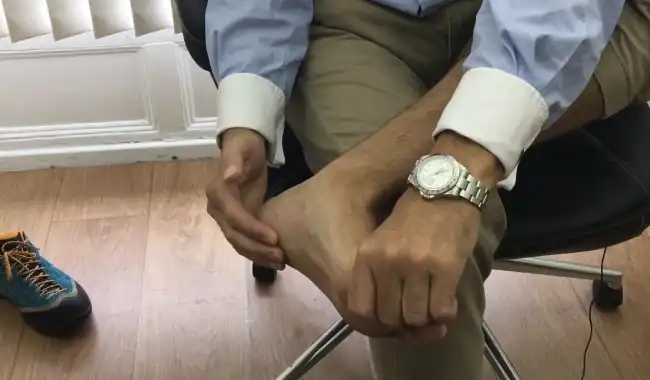
When treating your plantar fasciitis, there are several key points to consider. The following are listed:
1. Rest and Ice
To speed up your recovery, prioritize rest and use ice packs to reduce inflammation.
Rest is essential for allowing your foot to heal from plantar fasciitis. Giving your foot ample time to rest allows the inflamed tissues to repair and reduce swelling.
Additionally, using ice packs on the affected area can help alleviate inflammation and relieve pain.
Applying ice for 15 to 20 minutes at a time, several times a day can help to reduce swelling and discomfort. Remember always to wrap the ice pack in a thin cloth to protect your skin from direct contact with the cold.
Incorporating rest and ice into your treatment plan can contribute to a faster recovery from plantar fasciitis.
2. Proper Footwear
Invest in supportive shoes with good arch support to alleviate pressure on your feet and promote proper alignment. When managing plantar fasciitis, wearing the right footwear is crucial.
The symptoms of plantar fasciitis include heel pain, especially in the morning or after a long rest. You may also experience pain and discomfort along the arch of your foot.
The right shoes can help reduce these symptoms and provide relief. Look for shoes with a cushioned sole and good arch support to distribute your weight evenly and reduce strain on your plantar fascia.
Custom orthotics can also be beneficial as they provide additional support and help correct any imbalances in your foot mechanics.
3. Stretching and Exercises
In addition to wearing appropriate footwear to prevent plantar fasciitis, stretching and exercising are also important factors in managing this condition.
Incorporating calf and foot stretches into your daily routine can greatly improve flexibility and help alleviate symptoms.
One effective exercise is towel scrunches, where you place a towel on the ground and use your toes to scrunch it toward you. This helps strengthen the muscles in your feet and toes.
Another beneficial exercise is calf raises, where you stand with your feet flat on the ground and raise your heels as high as possible, then lower them back down. This helps stretch and strengthen your calf muscles.
Remember to consult with a healthcare professional before starting any new exercise routine to ensure it’s safe for you.
4. Foot Massage
Incorporating regular foot massages into your routine can help relieve tension and promote relaxation. Tools like a cork massage ball or a frozen water bottle can effectively massage your foot and relieve tension.
Foot massage can provide various benefits such as improving circulation, reducing pain and inflammation, and promoting overall foot health.
Massaging the muscles, ligaments, and tendons in your feet can help alleviate plantar fasciitis symptoms, such as heel pain and stiffness. Additionally, foot massage can help release endorphins, natural painkillers, and mood boosters.
It is important to note that foot massage should be done gently and properly to avoid further injury.
5. Pain Management
Over-the-counter NSAIDs can help manage pain and inflammation in various body parts. Regarding pain management, NSAIDs, or nonsteroidal anti-inflammatory drugs, are a popular choice.
These medications work by reducing the production of certain chemicals in the body that cause pain and inflammation. NSAIDs can effectively relieve pain caused by arthritis, muscle strains, and headaches. They can also help reduce inflammation in conditions like tendinitis and bursitis.
It’s important to read and follow the instructions on the medication label and consult with a healthcare professional if you have any concerns or questions.
Remember, NSAIDs are not suitable for everyone, so it’s always best to seek medical advice before starting any new medication.
6. Orthotics and Inserts
Orthotics and inserts can provide additional support and cushioning for your foot, enhancing your hiking comfort. These devices are specifically designed to address common foot problems such as overpronation, high arches, and plantar fasciitis.
Orthotics are custom-made and can be prescribed by a podiatrist or orthopedic specialist, while inserts are pre-made and can be purchased over the counter.
Using either option will distribute pressure evenly over the sole of your foot, reducing the strain on your plantar fascia.
7. Injections
If orthotics and inserts haven’t provided sufficient relief for your plantar fasciitis, your healthcare professional might recommend corticosteroid injections.
These injections contain powerful anti-inflammatory medications that can help reduce pain and inflammation in your foot.
During the procedure, the healthcare professional will use a thin needle to inject the medication directly into the affected area of your plantar fascia.
The injections are typically performed in a clinic or doctor’s office and can relieve significant pain for several weeks or even months.
However, it’s important to note that corticosteroid injections are not a long-term solution and should be used sparingly due to potential side effects.
8. Surgical Options
When considering surgical options for your condition, you should consult with your healthcare professional to determine if plantar fascial release is necessary.
Plantar fascial release is a surgical procedure that aims to relieve the symptoms of plantar fasciitis by releasing the tight plantar fascia ligament. This procedure is typically recommended when other treatments, such as physical therapy or injections, have failed to provide adequate relief.
During the surgery, the surgeon will make small incisions on the bottom of your foot and carefully cut the plantar fascia to release the tension. This can help alleviate the pain and discomfort associated with plantar fasciitis.
After the surgery, you may require a period of rest and rehabilitation to allow for proper healing. It is important to discuss the potential risks and benefits of plantar fascial release with your healthcare professional to make an informed decision about your treatment options.
How Can You Go Hiking With Plantar Fasciitis?
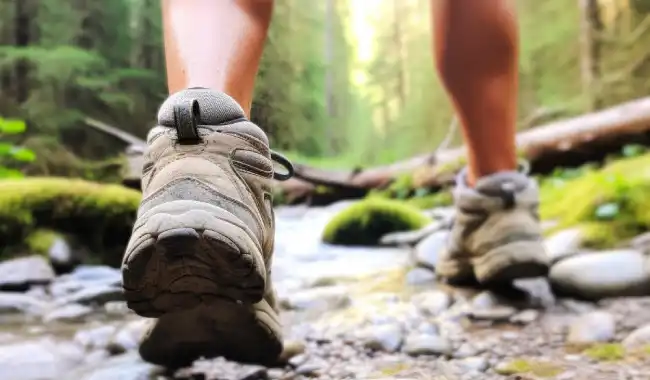
If you are already hiking and are experiencing plantar fasciitis during this time, you should follow these guidelines both during the hike and as a protective measure:
1. Footwear Selection
Any time you encounter plantar fasciitis while hiking, you should be aware of the shoe selection you make. Ensure you choose hiking shoes that provide enough arch support and cushioning to prevent plantar fasciitis.
When selecting footwear for hiking with plantar fasciitis, it is crucial to prioritize comfort and support.
Look for shoes with a supportive arch design to alleviate pressure on the plantar fascia, the band of tissue connecting the heel to the toes.
Additionally, opt for shoes with adequate cushioning to absorb shock and reduce the impact on the feet. This will help prevent further strain on the plantar fascia and minimize discomfort. Consider trying on different brands and styles to find the perfect fit for your feet.
2. Gradual Activity Increase
To prevent overloading your feet too quickly, gradually increase the distance and intensity of your hikes. This will allow your feet to adapt and strengthen gradually, reducing the risk of developing plantar fasciitis.
Begin with shorter hikes at a comfortable pace, and slowly increase the distance and duration of your walks over time.
Pay attention to any signs of discomfort or pain in your feet, and adjust your activity level accordingly. It’s important to listen to your body and not push yourself too hard too soon.
3. Stretching
Incorporate stretches like calf stretches, and arch stretches into your daily routine. They can help maintain flexibility and reduce discomfort. Stretching is an important part of managing plantar fasciitis.
This condition is characterized by plantar fascia inflammation, a thick band of tissue connecting the heel bone to the toes.
Regularly stretching the calf muscles and the foot arch can alleviate tension on the plantar fascia and promote healing.
Calf stretches involve standing near a wall and placing one foot behind the other. Arch stretches involve sitting on a chair and rolling a tennis ball under the arch of your foot.
Remember to hold each stretch for about 30 seconds and repeat them multiple times throughout the day for maximum effectiveness.
4. Use Trekking Poles
If stretching alone doesn’t provide enough relief for your plantar fasciitis, another helpful tool to consider is using trekking poles.
Trekking poles can provide additional support and stability while walking or hiking, which can help alleviate the strain on your feet and heels. Using trekking poles, you can distribute your weight more evenly, reducing the pressure on your plantar fascia.
These poles extend your arms, allowing you to engage your upper body muscles and take some of the load off your feet.
This can help to prevent further irritation and inflammation of the plantar fascia and provide some much-needed relief. Properly adjust and use your trekking poles to maximize their benefits.
5. Flat Terrain and Softer Surfaces
Walking on flat trails with softer surfaces like dirt can provide a less taxing experience for your feet. When you walk on flat terrain, you avoid the strain that comes with steep inclines and declines.
This can help reduce the risk of developing symptoms of plantar fasciitis, a condition that causes pain and inflammation in the heel and bottom of the foot.
The softer surface of dirt trails also absorbs some of the impact when you take a step, providing cushioning for your feet and reducing the stress on the plantar fascia.
6. Foot Care During Hikes
Take regular breaks to stretch and massage your feet to ensure proper foot care during hikes. Hiking can be a strenuous activity that puts a lot of pressure on your feet.
By taking breaks and giving your feet some attention, you can prevent potential foot problems. Stretching your feet helps to loosen up the muscles and increase flexibility, reducing the risk of strains and injuries.
Massaging your feet can also provide relief and help to alleviate any soreness or discomfort.
Consider using a small massage tool or a golf ball to massage your feet on the go. This can help to stimulate blood flow and relax the muscles.
7. Stay Hydrated
To stay properly hydrated during your hike, be sure to drink enough water throughout the day. Proper hydration is crucial for your body’s overall function, especially during physical activity.
When you hike, you lose water through sweat; if you don’t replenish it, you can become dehydrated. Dehydration can lead to dizziness, fatigue, muscle cramps, and even heat stroke.
Drinking water before, during, and after your hike is important to maintain your body’s fluid balance. The general recommendation is to drink at least 8 ounces of water every 20 minutes while hiking. However, this can vary depending on factors such as the intensity of your hike, weather conditions, and your own body’s needs.
What triggers plantar fasciitis?
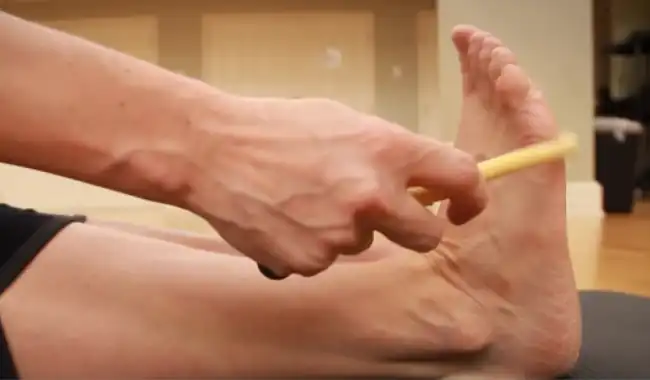
Plantar fasciitis is triggered by the inflammation of the plantar fascia, a thick tissue responsible for supporting the foot’s arch and aiding in walking and movement.
Repetitive motion and excessive pressure on the foot arch are the primary causes of this condition.
Inappropriate footwear, foot structure variations like high arches or flat feet, overuse of the feet in certain activities, and walking on surfaces without proper cushioning or support can all cause plantar fasciitis.
What foods should you avoid if you have plantar fasciitis?
If you are struggling with plantar fasciitis, it is essential to be cognizant of your dietary choices. Certain foods have the potential to exacerbate the condition by contributing to inflammation. Therefore, it is advisable to avoid animal protein sources that are rich in saturated fats, such as red meat, and prepared foods containing refined grains, sugar, and trans-fats.
Foods made with white flour, such as pasta, snacks, and desserts, should also be moderated due to their potential impact on inflammation.
Additionally, in moderation, it is crucial to consume vegetable oils abundant in omega-6 fats, such as corn, soybean, and sunflower oils, as they can also contribute to inflammation.
Triumph Over Plantar Fasciitis: Your Pathway to Uninterrupted Hiking Adventures
When you face the challenges of plantar fasciitis while hiking, it’s important to remember that being attentive to your body’s signals can make all the difference.
Knowing the symptoms to watch out for, like heel pain, arch discomfort, stiffness, swelling, and Achilles tendon tightness, can help you manage the condition.
You can make your hiking journey more comfortable with proper treatment options such as rest, proper footwear, stretching, and considering your hiking terrain.
By making wise decisions about your diet and foot care, you can stride forward confidently, ensuring that plantar fasciitis won’t hinder your hiking passion.
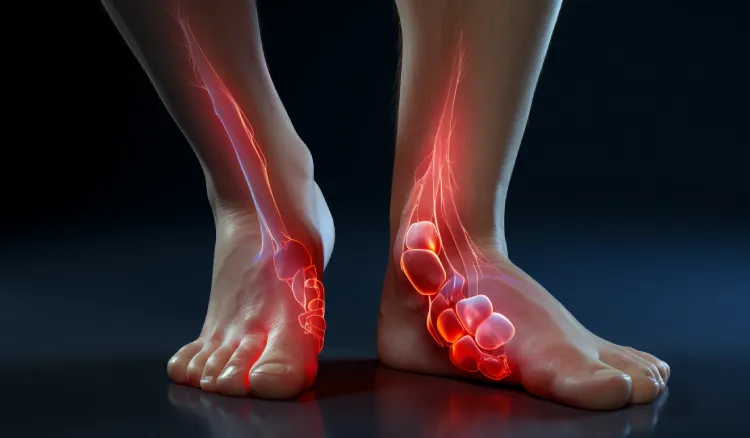


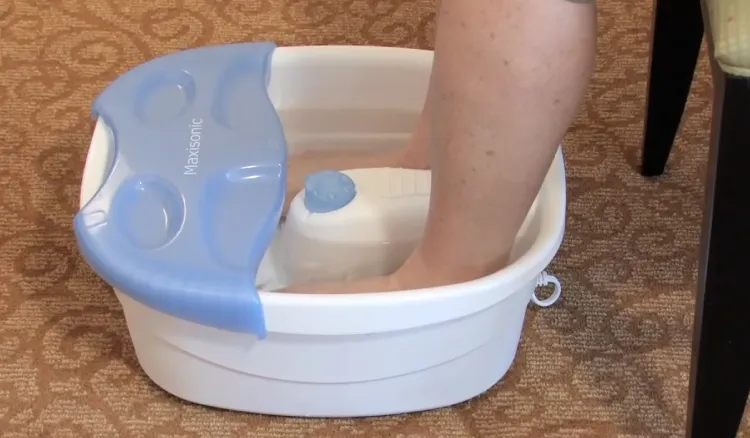
Leave a Reply